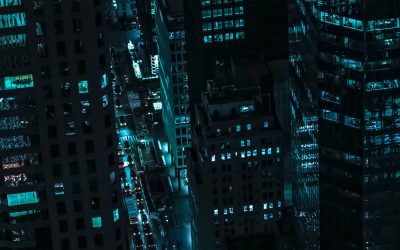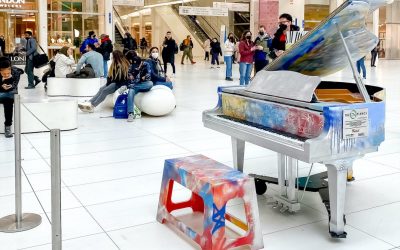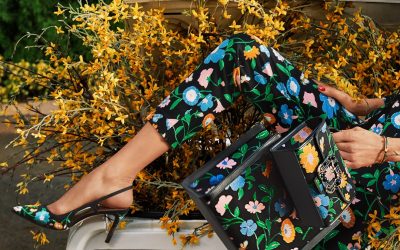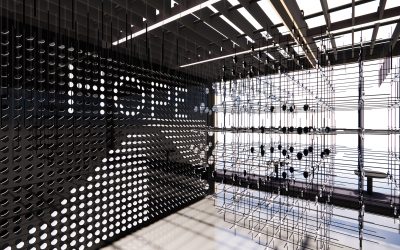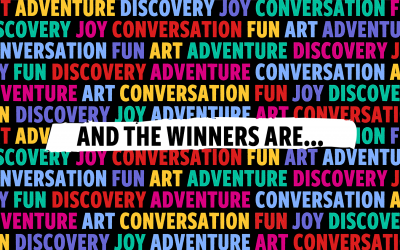The sheltering at home (when possible) effect the virus has had on the world over, has made many of us appreciate the arts more than ever. With galleries, art fairs, and installations closed, canceled, or postponed for the time being, supporting artists is more important than ever. See below for Christiansen’s take on the ever-evolving world of art.
Downtown: Tell us about the services your firm, Chelsea Art Group, provides?
Donald Christiansen, Founder of Chelsea Art Group: Basically, we are an Art Advisory firm. We provide detailed information to our clients about the work that we offer to them. Whether it is to incorporate art in order to decorate a new home or office, or if it is to purchase art to diversify an investment portfolio, we make sure that our clients have all the important information about the artwork they are interested in purchasing. We also manage entire collections—this includes loans to Museums and Gallery Exhibitions. In addition, we have the capability of providing ancillary services such as framing and shipping.
Downtown: How would you describe the state of the art industry today?
DC: Unknown! I think the future of the entire world is in a state of unknowing. However, because several clients are still buying and there are a few major purchases happening, I feel encouraged. Many people are looking for bargains now and are interested in putting their money into physical assets such as art, but they are also looking for big discounts. I have several good works that are being greatly discounted because the owners are now in need of cash.
Downtown: With so many huge galleries such as Pace furloughing workers, how do you see the art world adjusting in the next year?
DC: Time will tell! I do not think anything will ever be the same, and unfortunately, some of those jobs will probably never come back. Certainly, some of the mid-to-small galleries will have a difficult time returning to their pre-COVID-19 days, but I think the larger and more prestigious galleries will return to their former state, and possibly even expand. With the current individual isolation requirements, galleries and art fairs are creating digital platforms with accessible virtual viewing rooms. I think the big surprise is that there are so many sales taking place on these platforms.
Downtown: How do you think COVID-19 will impact the art market differently to the financial crash of 2008?
DC: People have a lot more money to spend now as compared to the days of the financial crash. Many are looking to diversify their portfolios to include tangible assets. With many more people flooding the market, art has become its own financial class. As was back then, a lot of money is flowing out of Asia for tangible luxury goods and art can be a lucrative investment with the right strategy.
Downtown: What measures would you like to see undertaken in the art world in support of galleries and artists?
DC: Collectors at any level should make purchases to help out both the galleries and the artists.
Downtown: What was the last art fair you went to and what was the general feeling then?
DC: We took a group of clients to the Zona Maco Art Fair in Mexico City this past February. Things were very upbeat, and we sold quite a lot from the galleries participating in the fair. During the course of the week we visited the Mexico City galleries and some artist’s studios
Downtown: How valid is “fatigue” to you? How many art shows would you attend over the course of a year?
DC: Last year, by the end of April, I had traveled to seven fairs. I was away more than I was home. I made a conscious decision to stay home this year and I am glad I did because there were definite issues with people contracting the Coronavirus all over the world. I am pretty tired of the fair circuit and since many galleries already know me, I can work with them from my home. So I don’t feel it is necessary for me to visit as many fairs anymore. However, I say this, but I will probably back soon.
Downtown: While many of us bemoaned the sheer number of fairs in both the design and art worlds, what fair would you most love to explore again right now?
DC: I think Art Basel Switzerland in June will be missed this year. This was one of the first fairs and remains one of the best art fairs I visit each year. Galleries save and place their best pieces in Basel each year. I look forward to the rescheduled fair in the fall.
Downtown: Why would you argue that investing and supporting art and artists is more important now than ever?
DC: As I mentioned earlier, for galleries and artists to survive it is imperative for people to purchase art. I am afraid that for a while there may be a lull as people will take time to adjust to the new norm. Galleries need to retain and pay their employees, and artists need to eat and pay rent. When the crisis hit, people cut back their discretionary spending and saved it for a rainy day. Unfortunately, art purchases are one of the first purchases to be put on hold.
Downtown: Who are some of the emerging artists you have your eye on now and why?
DC: I am always looking and buying artwork where I can find it. The artists I collect are usually established and already quite famous. I have been very interested lately in Spanish artists from the late 1950s. I recently bought an Esteban Vicente. Two of the most recent acquisitions are women artists who have had amazing mid-career success and have been included in many museum shows. Camille Henrot creates a primitive mythology featuring half-human and half-animal beings, and Jorinde Voigt, who is an artist from Berlin, incorporates physics and geometry with poetry. Both artists have great stories behind the work and styles that are totally new and different.
Downtown: What do you think this period in our lives—where many of us are confined to our homes—has taught people about the importance of art and the arts in our lives?
DC: When this period is over, I think there will be a thirst to see things in real life and up close. Hopefully as quickly as possible. I think people will start seeing beyond the canvas, from sculpture to performance art, and search for the meaning behind these artistic expressions. Isolation and confinement can create a feeling of appreciation for the artwork they have acquired. This can encourage people to find more art for their homes that can bring them comfort in distressing times.
Downtown: Are you still advising and consulting with clients? If so, where can our readers reach you?
DC: I consult daily. I receive 50–100 emails with people buying or selling artworks—some with deep discounts. Some calls are from people designing their new homes and wanting me to find some special works for their space. We have a website, which show some of the works we have placed over the years, as well as artwork we have sold showcased in clients’ homes. Some of the larger ticket items I have sold need to be treated more discreetly and I can’t show them.
Downtown: Have you gone on any of the virtual museum tours? If so, which would you recommend to our readers and why?
DC: I have checked out a few Galleries Virtual sites to see what they would have brought to different art fairs. I think most of the museums will have some extra content at this time. MOMA and LACMA are two of the good ones.







